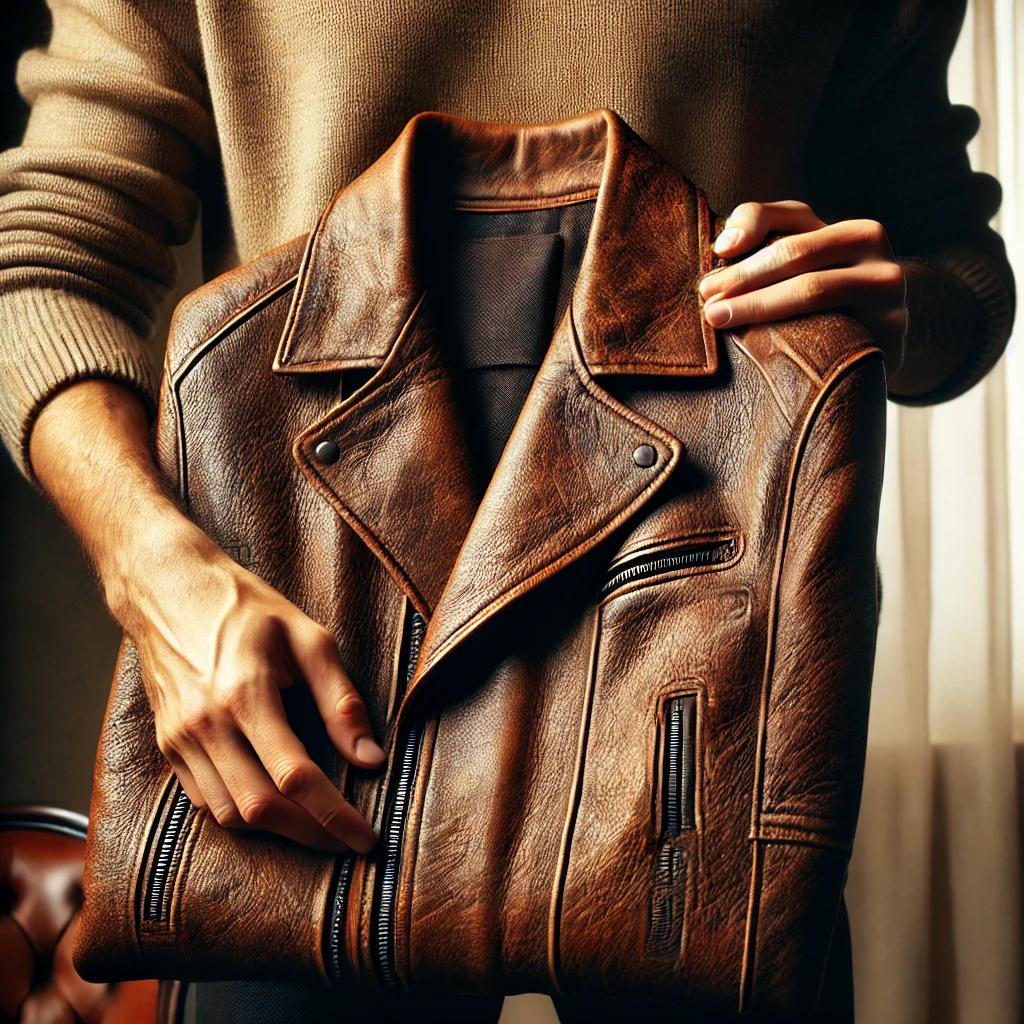How to Tell if a Leather Jacket is Authentic: The Complete Guide
Buying a leather jacket is an investment, and you want to make sure you’re getting the real deal. Leather jackets are iconic for their durability, luxurious look, and unique feel, but the market is filled with synthetic versions that mimic real leather’s appearance. Here’s how you can distinguish a genuine leather jacket from faux leather using easy, practical methods.
1. Examine the Texture and Grain
The texture and grain of leather are some of the most telling indicators of authenticity. Real leather has a unique, irregular pattern and may have minor imperfections due to its natural origin. These imperfections, such as tiny scratches or variations in grain, add character to genuine leather and make each piece unique.
How to Check: Run your fingers across the surface. Authentic leather feels slightly textured, with some natural bumps and grainy patches. Synthetic leather often feels overly smooth and uniform, which is a sign of factory production rather than natural material.
2. Smell the Leather
Real leather has a distinct, earthy smell that can’t be replicated in synthetic materials. This smell comes from the natural fibers and oils within the leather. Faux leather or “PU leather” often smells like chemicals or plastic.
How to Check: Take a deep sniff of the jacket. The natural, rich scent of leather should be noticeable right away. If it smells overly synthetic or chemical-like, it’s likely faux leather.
3. Test Water Absorption
Leather is a porous material, meaning it will absorb small amounts of water. This absorption test can be a reliable way to confirm authenticity.
How to Check: Place a drop of water on the surface of the jacket. Real leather will absorb the water almost immediately, creating a darker spot that fades as it dries. Faux leather won’t absorb water; instead, the water droplet will simply sit on the surface and might even roll off.
4. Feel the Weight and Flexibility
Genuine leather is naturally dense and has a heavier feel than faux leather, which is typically lighter due to synthetic materials.
How to Check: Pick up the jacket and feel its weight. Real leather has a bit of heft to it, especially in heavier styles like biker or bomber jackets. Additionally, real leather feels soft and flexible when you handle it, whereas faux leather may feel stiffer or more rigid.
5. Inspect Labels and Certifications
Many high-quality leather jackets come with authenticity labels or certifications. These labels are often attached by reputable manufacturers to assure customers of the quality and origin of the leather.
How to Check: Look for tags or labels mentioning “100% genuine leather,” “full-grain leather,” or “top-grain leather.” These terms mean that the leather hasn’t been mixed with other materials or treated to resemble something it’s not. Be cautious of labels that say “PU leather,” “bonded leather,” or “man-made leather,” as these indicate synthetic materials.
6. Examine the Edges for Roughness
Real leather edges are usually a bit rough, natural, and sometimes even a little uneven. In contrast, faux leather is typically cut and finished with a smoother edge for a cleaner look.
How to Check: Inspect the edges of the jacket, especially around the cuffs, seams, and collar. If the edges look raw or unsealed, that’s a positive sign you’re looking at genuine leather. Synthetic leather edges tend to be smooth, consistent, and perfectly finished.
7. Look for Natural Wrinkles and Creases
Real leather has a natural elasticity and forms wrinkles or creases when pressed or bent. These wrinkles add character to the jacket and give it a unique charm as it ages. Faux leather doesn’t have the same elasticity, so it won’t form wrinkles in the same way.
How to Check: Gently press or pinch the leather. Authentic leather will show small, temporary wrinkles and then return to its original form. Faux leather tends to be less responsive, remaining either stiff or forming unnatural-looking folds.
8. Fire Test (Only for Experts!)
One of the most conclusive ways to check leather authenticity is through the fire test. Real leather is more resistant to fire than synthetic leather, which is made from plastic-based materials.
How to Check: Carefully hold a small flame near a hidden area of the jacket. Real leather will char slightly but won’t catch fire. Faux leather, however, will melt and release a burning plastic smell. Use extreme caution if attempting this test and only try it if you’re certain you won’t damage the jacket.
Why Knowing the Difference Matters
Authentic leather jackets are highly durable and only get better with age, developing a unique patina over time that adds to their appeal. Faux leather, however, tends to crack and wear out, losing its aesthetic appeal. With these tips, you’ll be equipped to distinguish between real and fake leather, ensuring your investment in a leather jacket is worth it.
Wrapping Up: Real Leather is Timeless
A genuine leather jacket is more than just clothing; it’s a long-term companion in your wardrobe that can last a lifetime with proper care. Knowing how to identify authentic leather helps you make a smart purchase and avoid falling for imitations. So, the next time you’re out shopping for that perfect leather jacket, use these simple tips and invest in the real deal.
By following these steps, you can confidently spot a real leather jacket and make sure you’re getting quality, durability, and style that only authentic leather provides.


